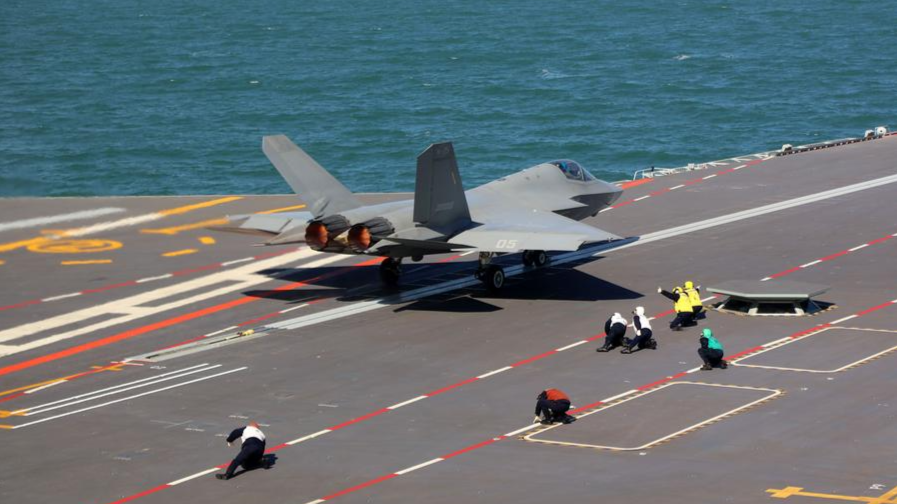
BEIJING - The Chinese navy on Monday announced that carrier-based aircraft J-15T, J-35 and KongJing-600 have successfully completed their inaugural electromagnetic catapult-assisted takeoff and arrested landing training aboard the Fujian aircraft carrier.
The success of the training shows that China's first domestically built catapult-equipped aircraft carrier has obtained electromagnetic catapult launch and recovery capabilities, marking another breakthrough in the development of China's aircraft carriers.
The training verified the sound compatibility of China's fully domestically developed electromagnetic catapult and arresting systems with multiple aircraft types, according to the navy.
This means that the Fujian has obtained initial full-deck operational capabilities, paving the way for multiple types of carrier-based aircraft to be integrated into the carrier formation, the navy said.
ALSO READ: CNS Fujian conducts training operations in South China Sea
The success will provide vital support for conducting far-sea combat operations and accelerating the navy's strategic transition from near-sea defense to far-sea protection, said Han Wei, director-general of the carrier-based aircraft branch of the Chinese Society of Aeronautics and Astronautics, and a professor at Naval Aviation University.
J-15T, J-35 and KongJing-600 aircraft were showcased during a massive military parade China held on Sept 3 to mark the 80th anniversary of victory in the Chinese People's War of Resistance against Japanese Aggression and the World Anti-Fascist War.
KongJing-600 -- China's first carrier-based fixed-wing early warning aircraft -- will significantly expand the range of early warning detection and airspace surveillance, and greatly extend the aircraft carrier's defense and strike radius, Han said.
The successful launches and landings of J-35 and J-15T fighter jets mean that the Fujian now boasts the capabilities of both defense penetration and heavy-load strikes, Han noted.
As a fifth-generation carrier-based stealth fighter, J-35 strikes like a "concealed dagger" with a primary mission of gaining air superiority, while J-15T possesses robust capabilities of striking both sea and land targets, according to Han.
READ MORE: CNS Fujian sails into South China Sea
With electromagnetic catapults, early warning aircraft's sortie and recovery rates will be significantly increased, while J-35 can rapidly take off with a full fuel load and in stealth configuration, and J-15T can be launched with a full fuel and full armament load, Han added.
In recent years, the Chinese navy's carrier-based aviation has accelerated its development, leaping forward from single aircraft to integrated systems, from shore-based to shipborne operations, from ski-jump to catapult launches, and from being able to fly to capable of combat. The navy is steadily advancing toward the goal of becoming a world-class force at sea.
The Fujian, China's third aircraft carrier with hull number 18, was launched in June 2022 and named after Fujian Province. Unlike the ski-jump decks of China's first two carriers -- the Liaoning and the Shandong -- the Fujian features a flat flight deck, with a full-load displacement exceeding 80,000 tonnes.
Since its first sea trials in May 2024, the Fujian has carried out a series of maritime tests according to plan, progressing with equipment commissioning and assessments of overall operational stability.


